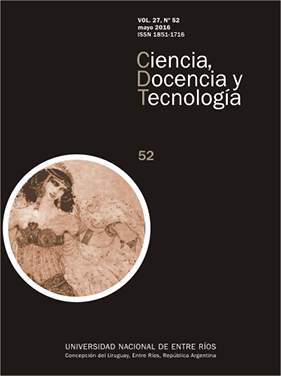Abstract
This paper shows a fuzzy system to detect learning styles through a virtual training environment, with the aim of contributing to improved levels of personalization. Here, the individual learning characteristics become the main ingredient scenarios innovative virtual training. It is shown three factors that were taken into account when formalizing the fuzzy variables: an adaptation of Felder and Silverman test, the path or trace of learning and a knowledge test. They explain the nature and respective connotation of each of them as the criteria for the construction of fuzzy production rules. Also, they show some of the results obtained when simulating with various input dataReferences
AL-HMOUZ, A.; SHEN, J.; JAN, J. (2010). Enhanced Learner Model For Adaptative Mobile Learning. 12th International Conference on Information Integration and Web-Based Applications & Services. 783-786
ALONSO, C.; GALLEGO, D. (2004). Estilos de Aprendizaje: Teoría y Práctica. Madrid: UNED.
CAMACHO., Y. d. C.; ALANDRO, M. (2011). Estilos y Tipos de Aprendizaje: Un Problema Contemporáneo de la Educación. Cuadernos de Educación y Desarrollo Volumen 3. 21-28.
CROCKETT, K. (2011). On Predicting Learning Styles in Conversational Intelligent Tutoring System Using Fuzzy Clasification Trees.IEEE International Conference. 2481-2488.
CURRY, L. (1987). Integrating Concepts of Cognitive or Learning Style: A Review With Attention to Psychometric Standards.Canandian College of Health Service Executives.123-130.
FELDER, R.; SILVERMAN, L.(1988). Learning and Teaching Style. Engineering Education.674-681.
GRIGORENKO, E.; STERNBERG, R. (1995). Thinking Styles. International Handbook of Personality and Intelligence. 205-229.
HSU, C.; WANG, K.; HUANG, Y. (2010). Modeling Personalized Learning Styles in a Web-Based Learning System. Lecture Notes in Computer. 12-21.
LOPEZ, K.; DUQUE, N.; BROCHERO, D. (2011). Replanificación de Actividades en Cursos Virtuales Personalizados con Arboles de Decisión, Lógica Difusa y Colonias de Hormigas. Avances en Sistemas e Informática. 71-84.
LOZANO, A. (2000). Estilos de Aprendizaje y Enseñanza. Un Panorama de la Estilística Educativa. México: Itesm .
MAMDANI, E.; ASSILIAN, S. (1999). An Experiment in Linguistic Synthesis With a Fuzzy Logic Controller. International Journal Of Human-Computer Studies. 51(1071-5819):135-147.
MANISH, J.; RAVINDRA, V.; PAWAN, L. (2011). Automatic Determination of Learning Styles. 2nd International Conference on Education and Managment Technology .
PAJAREZ, G.; SANTOS, M. (2006). Inteligencia Artificial e Ingeniería del Conocimiento. Mexico: Alfaomega.
RAYNER, S.; RIDING, R. (1997). Towards a Categorisation of Cognitive Styles and Learning Styles. Educational Psycology. 5-27.
RIDING, R.; RAYNER, S. (1999). A Cognitive Style Preventative Intervention for Improving Behaviour and Learning in School. 4th Annual Conference of the European Learning Styles Information Network. 351-368.
TIMOTHY, R. (2010). Fuzzy Logic With Engineering Aplications. Singapore: Wisley.
XFUZZY. (2008). Sitio Web de Xfuzzy. Disponible en : <http://www2.imse-cnm.csic.es/Xfuzzy/> [8 Febrero 2015].
The authors retain the copyright and grant the journal the right to be the first publication of the work, as well as licensing it under a Creative Commons Attribution License that allows others to share the work with an acknowledgment of the authorship of the work and publication initial in this magazine. All content is published under the Creative Commons 4.0 international license: Attribution-Non-Commercial-Share Alike.

